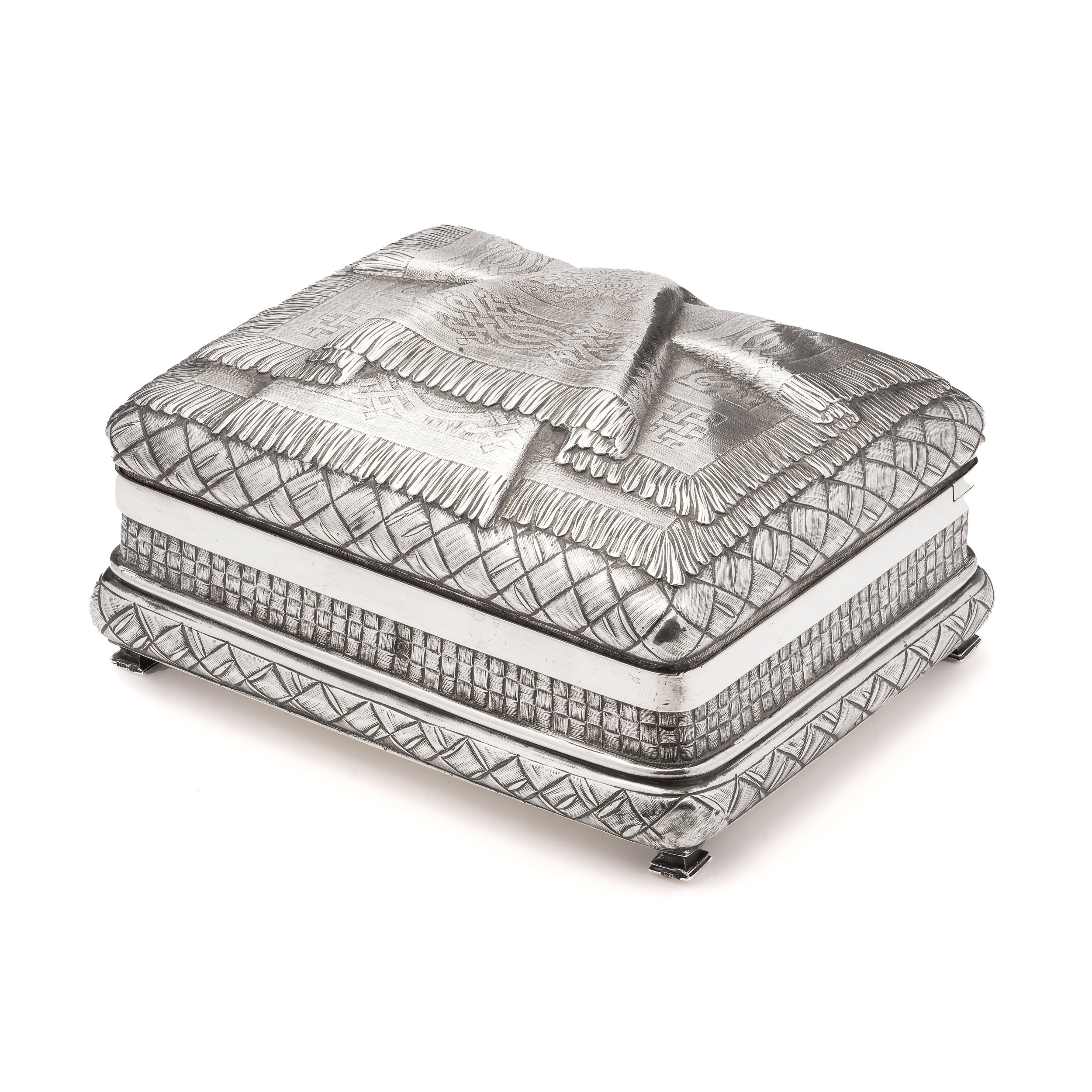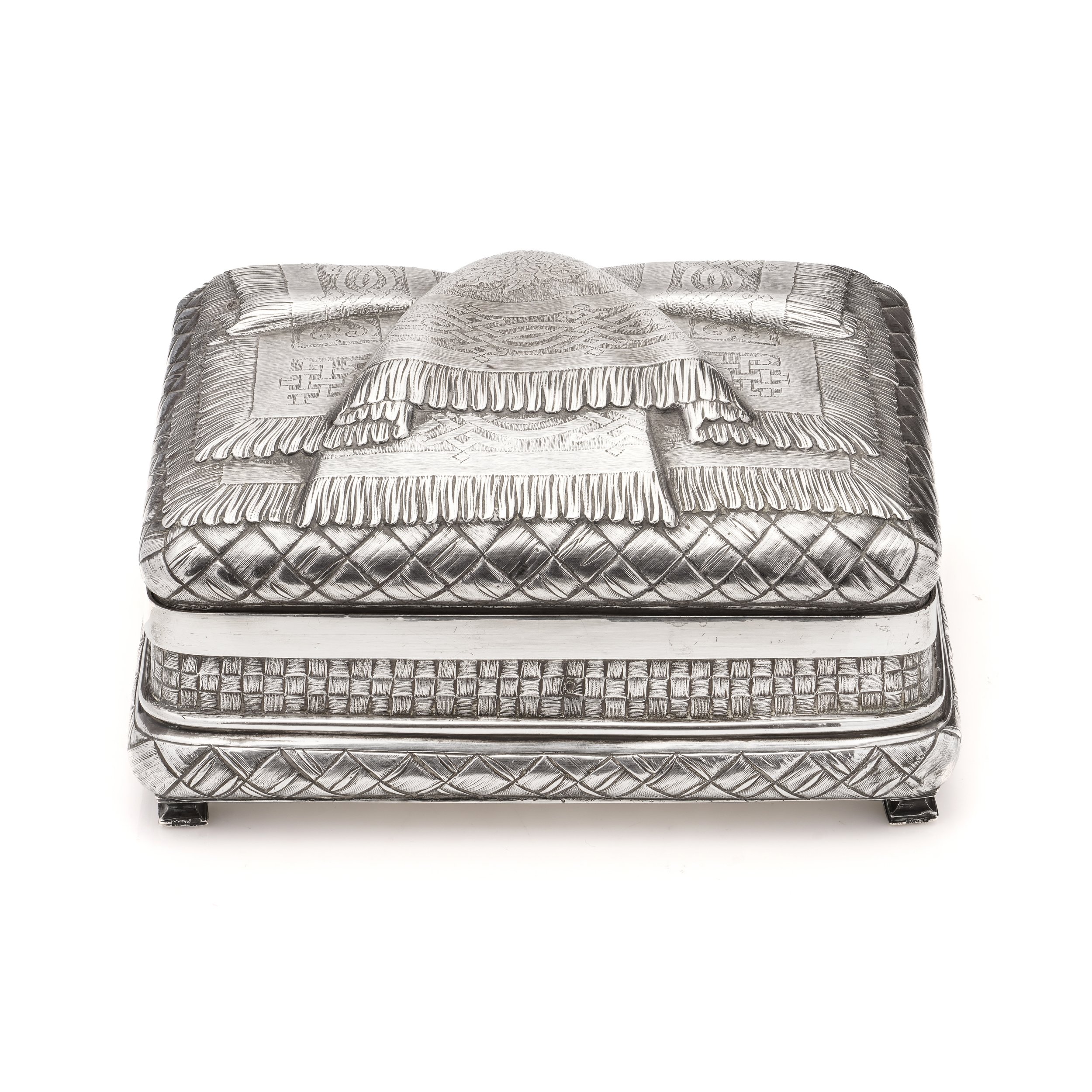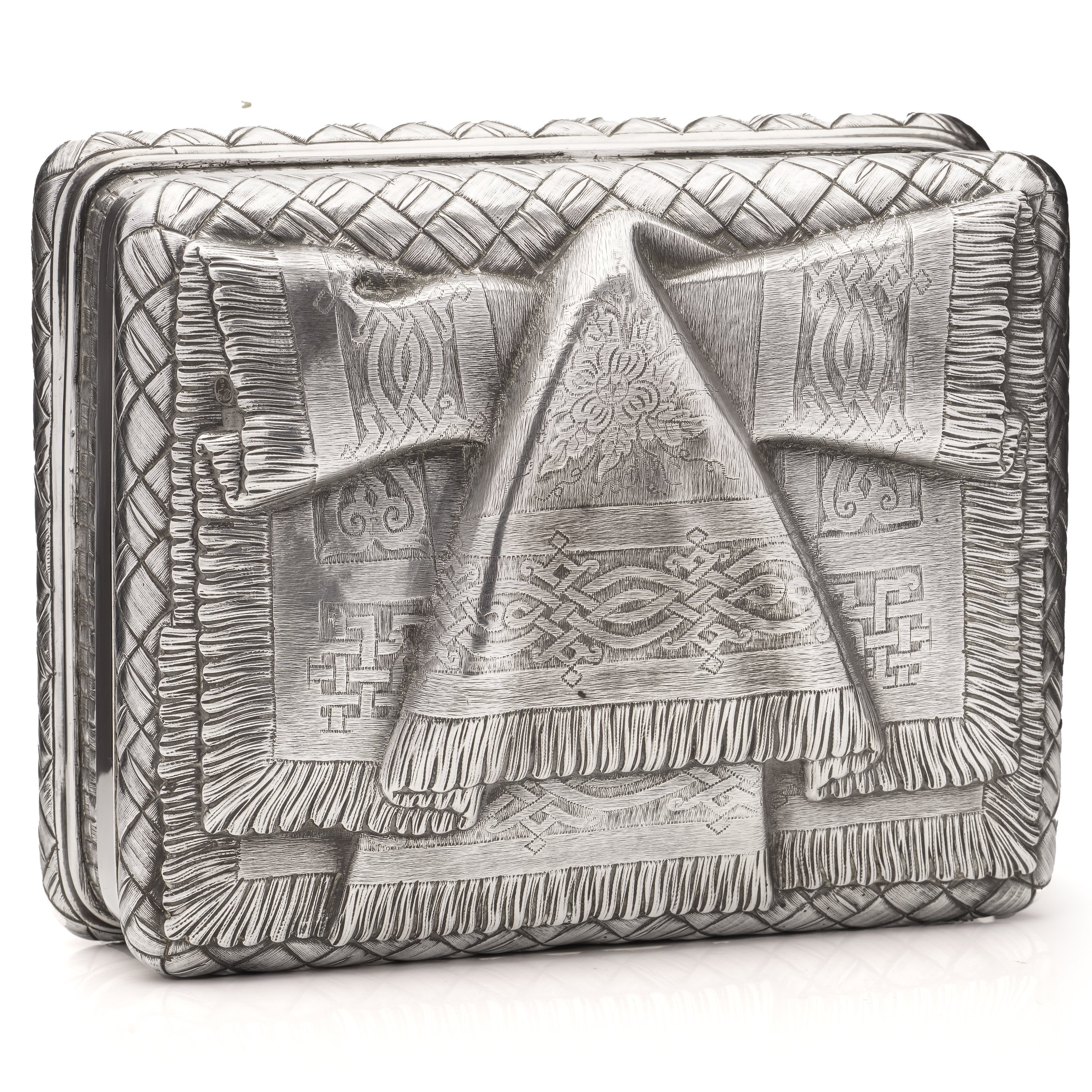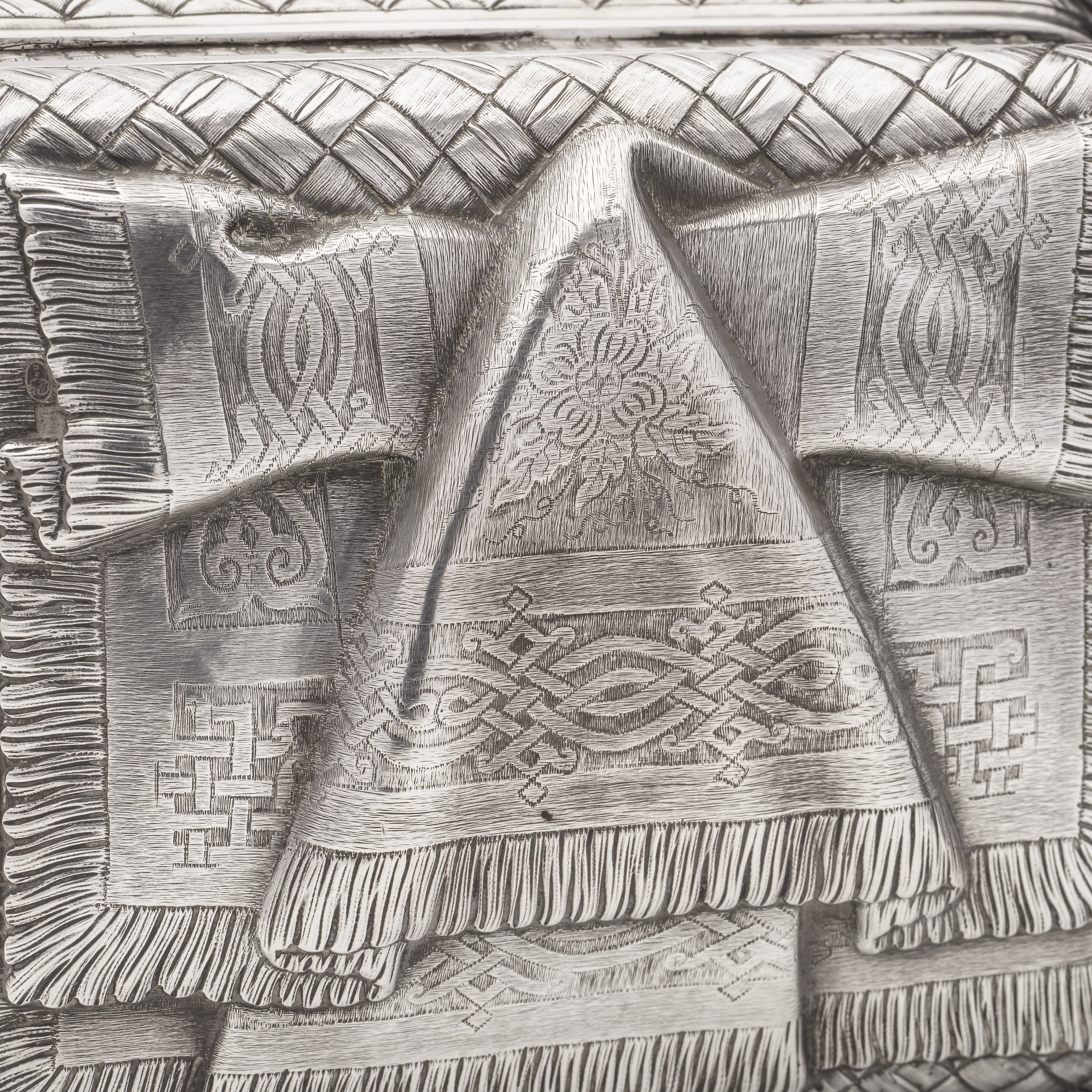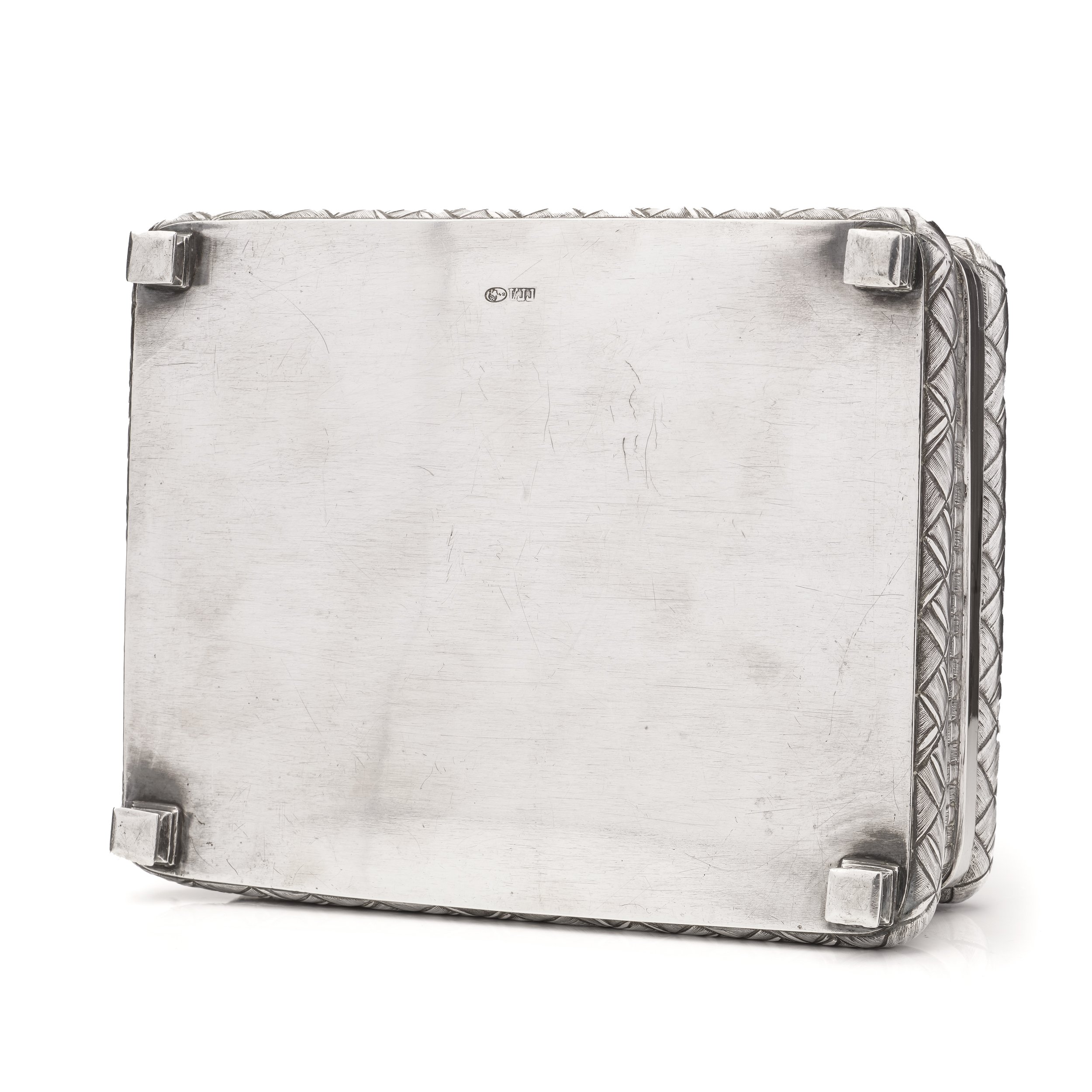-
Antique Russian sliver trompe l’oeil box by Grigoriy Loskutov
Made in Russia, Moscow, Circa 1900
Marked 84 Russian Sliver with the maker’s mark ‘GGL’ in Cyrillic for Grigoriy Loskutov.
The Dimensions:
Length x width x height: 16cm x 12.7cm x6.7cm.
Total Weight: 622 gramsCondition: The box is pre - owned, minor signs of usage, excellent and pleasant condition overall.
-
Antique Russian Silver Trompe l’oeil: A Tale of Deceptive Beauty
In the rich and opulent world of antique Russian silver, there lies a captivating chapter of history known as "Trompe l’oeil" (pronounced tromp loy ), a remarkable technique that brought the art of deception to life on precious metal.
The origins of this art form can be traced back to the 18th and 19th centuries, a period when Russia experienced significant cultural and artistic growth under the reigns of Empresses Elizabeth and Catherine the Great. During this time, skilled Russian silversmiths honed their craft and found innovative ways to captivate the nobility and aristocracy with their creations.
Trompe l’oeil, meaning "fool the eye" in French, was an artistic technique that aimed to deceive the viewer by creating incredibly realistic three-dimensional illusions on a two-dimensional surface. In the case of antique Russian silver, these intricate designs were meticulously handcrafted by talented silversmiths using various engraving and chasing tools.
One of the most famous examples of this remarkable artistry was the creation of faux inlay on silver objects. Skilled craftsmen would skillfully carve and engrave intricate patterns onto the surface of the silver, imitating the appearance of luxurious materials like wood, tortoiseshell, or even ivory. These creations were so convincing that, at first glance, they appeared to be made from the genuine materials themselves. The illusion was so well-executed that even the most discerning eye could be deceived.
Russian trompe l’oeil silver pieces were highly sought after by the nobility and wealthy merchants of the time. The masterpieces showcased not only the artisans' technical prowess but also their creative imagination, as they often depicted scenes from nature, intricate architectural designs, or even everyday objects such as books, quill pens, and musical instruments.
As the Russian Empire expanded its influence and trade connections with other European powers, the popularity of Russian trompe l’oeil silver spread beyond its borders. Foreign dignitaries and collectors were in awe of these deceptive treasures, which became cherished gifts exchanged between royalty and nobility across the continent.
However, as with many art forms, the popularity of trompe l’oeil eventually waned. By the late 19th century, tastes in design began to shift, and the ornate and elaborate styles of the previous century gave way to more restrained and simplified aesthetics. Additionally, the outbreak of World War I and the subsequent Russian Revolution of 1917 disrupted the production of such intricate silver pieces, marking the end of an era for this unique art form.
Today, antique Russian silver trompe l’oeil pieces are rare and highly prized by collectors and museums worldwide. They serve as a testament to the remarkable craftsmanship and creativity of Russian silversmiths of the past, who used their skill to deceive the eye and create lasting works of deceptive beauty that continue to mesmerize admirers to this day.


